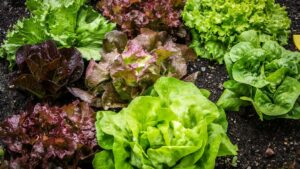In a global economy where everything is accessible at the click of a mouse, it’s easy to take for granted the basic essentials of life: food, clothing, shelter, clean water. However, meeting the needs of a growing population requires innovation in all areas of the seed industry, whether it is new germplasms, traits, breeding technologies, seed coatings, seed sorting, planting, harvesting or consumer focused innovations. Only by working together and respecting the rights of others, can we ensure the continued development of those innovations that will meet the needs of future generations.
New innovations are continuously being developed that provide benefits throughout the seed industry. Some examples include:
- Seed coating innovations:
- Preemergent seed technologies that provide protection against pests, such as organic seed treatments for spinach that provide early plant protection against Pythium even before the plant emerges
- Weed priming and enhancement technologies that improve vegetable seed yield and quality
- Grower focused innovations:
- Nematode resistant carrots
- Mildew resistance lettuce
- Mildew resistant spinach; and
- Aphid resistance lettuce
- Harvesting innovations:
- Mechanically harvestable broccoli, melons and parthenocarpic cucumbers (pickles) that save labor costs
- Consumer focused innovations:
- Snack sized miniconical peppers with almost no seeds, which are fun and sweet tasting for kids
- One-cut lettuce, featuring brilliant colors and diverse leaf shapes
- Arugula, herb and lettuce varieties with longer shelf life and a better consumer experience
- Tear-less onions offer better consumer experience for preparing cut onions
However, these innovations come at a cost and their continued discovery and development is only through a commitment to research. Seed companies annually invest in the development of new seed innovations and a great example of that investment is shown in leafy greens. In 1995, an estimated $5 million was invested in new lettuce innovations, increasing to $16.7 million in 2005 and $24.5 million in 2015.
For many crops, it takes 7 to 10 years to develop and commercialize a new variety, with an estimated average cost of $1 million per year, per variety. While this investment is daunting, over the past 30 years, new seed innovations has led to decreased soil erosion, greenhouse gas emissions, water and energy use, while crop yields have steadily gone up.
From new germplasm to harvesters, every area of the seed industry contributes to the investment and development of new innovations that are needed for future generations. However, to ensure this continued investment in new innovations, we all need to work together. This includes respecting the intellectual property rights of others. For seed companies, this can mean respecting the breeding methods, traits and germplasms of your competitors. For dealers, this can be selling professionally produced seed from a reliable source that maintains a standard and reputation that growers know they can count on. For growers, buying professionally produced seed or seed coatings maximizes their resources and provides the greatest yield, which in turn leads to more profits.
Together, we are seeding the future to meet the needs of future generations!
For more information on the intellectual property protection associated with seed related innovations, contact the SIPA program by visiting the SIPA website at www.seedipalliance.com or contacting James Weatherly at jamesw@seedipalliance.com.











